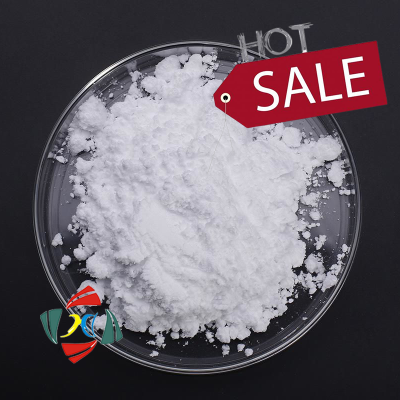-
Categories
-
Pharmaceutical Intermediates
-
Active Pharmaceutical Ingredients
-
Food Additives
- Industrial Coatings
- Agrochemicals
- Dyes and Pigments
- Surfactant
- Flavors and Fragrances
- Chemical Reagents
- Catalyst and Auxiliary
- Natural Products
- Inorganic Chemistry
-
Organic Chemistry
-
Biochemical Engineering
- Analytical Chemistry
- Cosmetic Ingredient
-
Pharmaceutical Intermediates
Promotion
ECHEMI Mall
Wholesale
Weekly Price
Exhibition
News
-
Trade Service
preface
Entering the summer, many places in the country open the "steaming" mode, there have been reports of deaths due to heat stroke, heat stroke is the most serious condition of heat-related emergencies, that is, severe heat stroke, is a usually life-threatening disease, which is defined as the core body temperature rises to more than 40 ° C, accompanied by central nervous system (CNS) involvement, manifested as confusion, delirium, epilepsy or coma, due to the lack of specific diagnostic examination, fuzzy manifestations and non-specific laboratory abnormalities, the diagnosis of heat stroke becomes complicated, Failure to treat promptly can lead to multiple organ dysfunction syndromes (MODS), which, once occurring, have extremely high
mortality.
Case passed
The patient, Jia Mou, male, 36 years old, was admitted to the hospital due to "coma for more than 3 hours" emergency department
.
Admission to check blood routine, urine routine, biochemical electrolyte + liver function + renal function + myocardial enzymes, urine occult blood 3+, protein 1+, urinascopy can see a large number of red blood cells
.
Case studies
Heat stroke causes electrolyte disturbances in the body, both hyperkalemia and hypokalemia have been reported, and the cause of hyperkalemia may be high potassium due to a decrease in plasma volume caused by dehydration during thermal exposure; The effect of the temperature increase on the simple diffusion leakage of K+ is less than the activity
of the pump.
Patients with myocardial enzyme abnormalities, may be caused by hyperthermia caused by skin vasodilation, blood redistribution, while the amount of cardiac output will increase, aggravate the cardiac load, in addition, can also cause myocardial ischemia, necrosis, arrhythmia, decreased cardiac function, so that the amount of cardiac output is reduced, resulting in myocardial damage cardiomyose abnormalities, mainly manifested as creatine kinase (CK), creatine kinase isoenzyme (CK-MB) and myoglobin (Mb) to varying degrees, generally on the first day of onset of the disease can appear cardiac
。
Myocardial enzyme abnormalities may also result from a large elevation of CK due to rhabdomyolysis, typical manifestations of rhabdomyolysis include myalgia, limb weakness, and myoglobinuria without hemoglobinuria
.
Patients with progressive platelet decline, the current mechanism of thrombocyte decline caused by heat stroke has not yet been clarified, foreign scholars in the baboon heat stroke model of the study shows that the activated platelets and neutrophils in multiple organs adhere to vascular endothelial cells, indicating that there is a symphysis of platelets, neutrophils and vascular endothelial cells in the pathological mechanism of heat stroke [4], and at the same time suggests that there are other mechanisms for thrombocyte decline in patients with heat stroke in addition to DIC, and its detailed mechanism needs further study
.
Some scholars believe that the reasons for the progressive decline of platelets caused by heat stroke may be related to the following aspects: (1) heat stroke causes inflammatory reactions, coagulation reactions, increased capillary fragility, damage to the vascular endothelium, leading to microthrombosis, and then cause platelet depletion
.
Case summary
Heat stroke has a high fatality rate, and laboratory indicators are necessary (the recommended indicators and frequency of testing are shown in Table 1).
The notification rate and the timely notification rate of critical values are also listed as 15 quality assessment indicators
.
Table 1 recommends laboratory indicators and frequency of monitoring in patients with heat stroke
References
[1] All-Army Expert Group on the Prevention and Treatment of Heat Stroke Disease, Expert Consensus Group on Emergency Diagnosis and Treatment of Heat Stroke Disease.
Liu Shuyuan,Song Jingchun,Mao Handing,Zhao Jinbao.
Song Qing.
[4] Roberts GT,GhebehH,ChishtiMA,et al. Microvascularinjury,thrombosis,inflammation,andapoptosis in the pathogenesis of heat-stroke: a study in baboonmodel[J].ArteriosclerThromb Vasc Bi-ol,2008,28(6) : 1130-1136
[5] HifumiT, Kondo Y, Shimizu K, Miyake Y.







